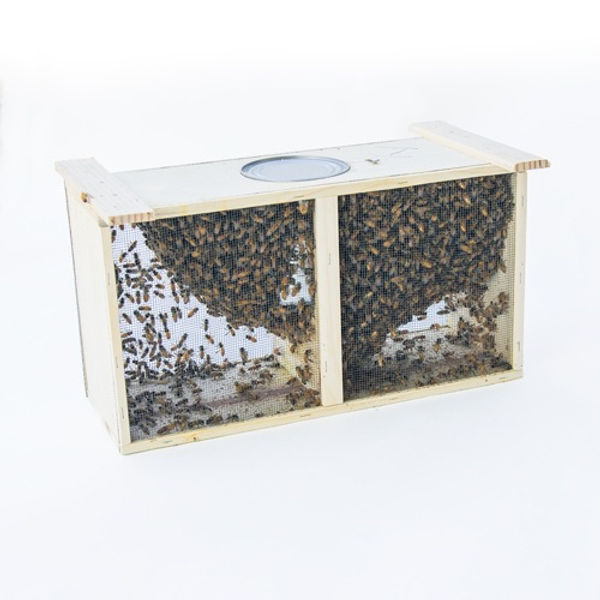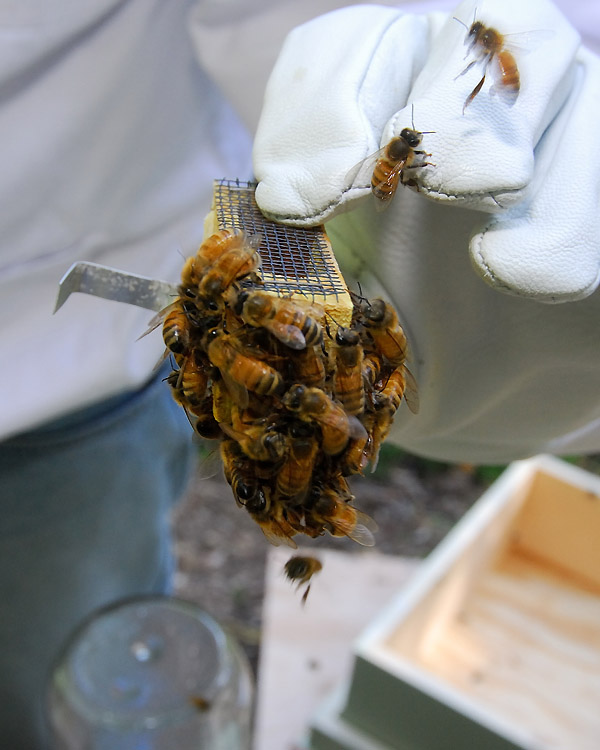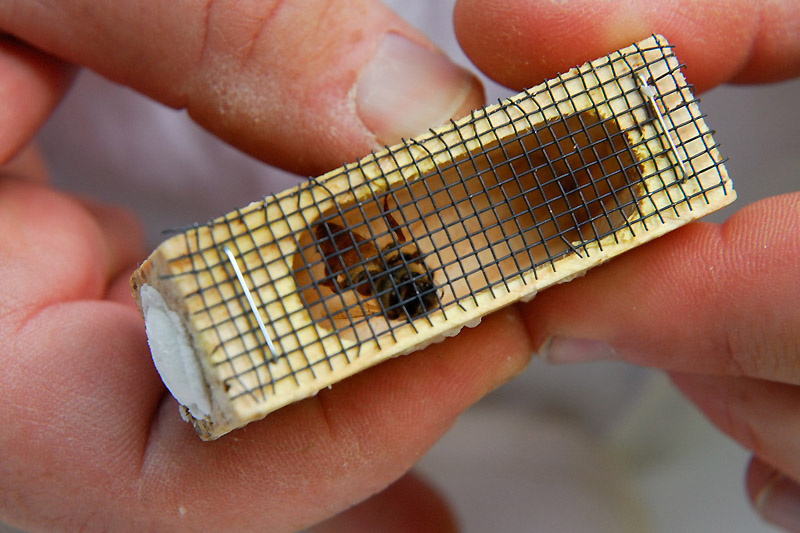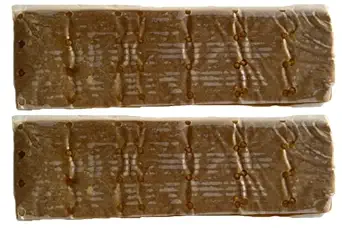Any update soon the hives? or his it pretty much see ya next spring? What kind oof maintenance is required during the winter months ?
Oh yes, sorry, there is upkeep but not as much. The bees can't tolerate very cold air as they try to keep the brood warm all winter. We can't be opening them much or often.
After the honey, there was a bee varroa mite treatment, either some pads of treatment for 2 weeks, or there is a vaporized treatment.
We lost one hive in fall and we don't know why. The queen was gone and all the bees dissipated. It could have swarmed but no signs of swarm cells. The queen could have just died. The mite treatment could have hurt them too much. The hive box and frames are in good shape, so we don't know why.
Then for winter, later this week the temperatures will hit 40 deg F for a few hours in the afternoons, we'll add a candy board, or bee fondant. Essentially a candy made of cane sugar (boiled to candy stage in flat sheets). This will slowly absorb moisture which is good for the hive, since excess moisture can kill a hive. The bees will eat it before depleting their honey supply during winter. Adding the candy will be quick so the hive doesn't cool down too much. It's placed on top of the hive box in a shallow box with hardware cloth, candy sits on the hardware cloth, bees eat it from the bottom. (I'll be making the bee candy this week sometime.)
Also, we added a wind break, to shelter the bee hives from the cold west wind. A panel of wood, 8x10 feet, one side two 2x4's, with heavy stakes, to hold it in place, so the west wind doesn't cool it off too much midwinter. We could move this if necessary, but a tall solid fence would do this also. Even a fence with tarp across it would help stop the winds at the hives.
Our neighbor, Zach, we've been teaching while learning ourselves joined the bee club too, monthly meetings most educational and social. He is putting in two hives in spring and has started buying the equipment. We gave him 2 supers for a christmas gift.
We'll be putting in 5 more hives in spring. So instead of just one area in the yard, with grass removed, bricks put down, hives on top, we'll have two areas, one on the west side, and the added one on the south east side. Zach's hives (2) and our hives (8), 10 in total.
Zach really wants to sell honey, and he wants to design his and our honey labels. Next year we'll all be selling honey.
No weekly maintenance in winter. Watch out for bears. Maybe make a path through the snow out to the hives so we can start checking them in spring when the weather warms up again.
In spring, there will be checks to see if they made it through winter. Adding more bee candy and pollen patties (buy) to get them nutrition so the queen will start building a strong spring/summer brood. Pollen patties encourage growth. I'm not sure what month that will happen, maybe March or April?
For starting new hives, buying/reserving queens and bees in Feb/march with them arriving April/May. Everything needs to be in place, so the new apiary grass removed, bricks added (or pavers), hives set up.




